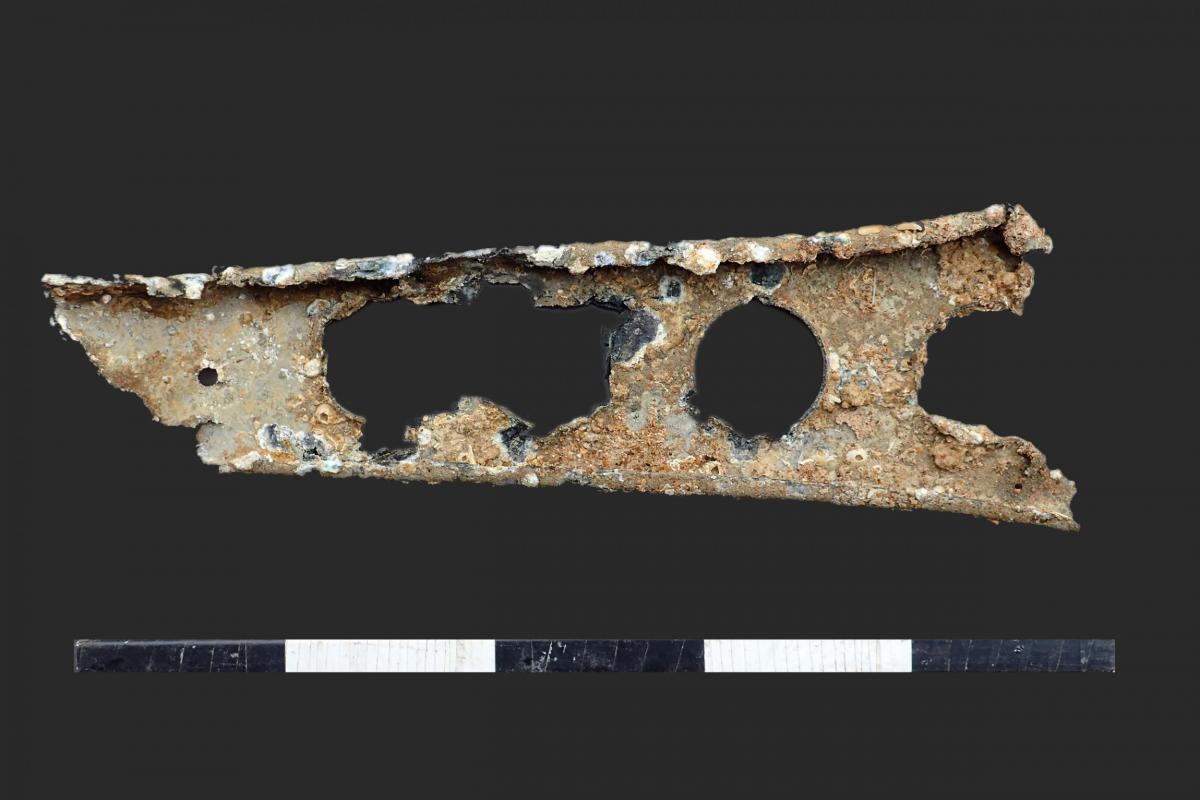Wessex Archaeology were contracted through J-Power solutions to support the Nemo Link Interconnector by providing archaeological services for the project.
The construction of the electrical interconnector between the UK and Belgium, consisting of underground cables connected to a converter station in each country, allows for the flow of electricity between the two countries to trade it more easily.
Marine archaeology mitigation
The support offered by Wessex Archaeology involved delivering on the archaeological mitigation set out in the conditions on the marine licence, issued by the Marine Management Organisation.
This included archaeological interpretation of marine geophysical data, detailed geo-archaeological studies to investigate submerged former landscapes and their environment; provision of an archaeological protocol for finds of archaeological material located during the development; and associated awareness training to contractors on the project to support them in identifying finds.
During the project, Wessex Archaeology worked very closely with the route clearance and Unexploded Ordnance contractors to meet these conditions.
Finds on the seabed
Where the cable route fell in UK territories, geophysical data highlighted a large number of anomalies on the seabed.
Many of these turned out to be unexploded ordnance related to World War II, but during clearance operations a range of archaeological finds were also encountered. These included several anchors from the 19th and 20th centuries, some wooden shipwreck material and metal banding from the hull of a late 19th century fishing vessel, fishing gear and small pieces of aircraft debris.

The cannon
One of the most exciting items recovered was a cannon. When the cannon was first identified on the seabed, it was heavily enclosed in marine concretion and it was not clear what it was.
However, after recovery the cannon has been identified as an English iron 3-pounder gun of 5ft 6in. The shape of the ‘cascabel’ (the closed end) and the overall proportions and features suggest that it was cast to the Borgard pattern. The absence of a royal cypher or Rose and Crown, and the fact that it is shortened by 6 inches in the second reinforcing ring, indicate that this gun was likely used for merchant shipping.
Given the likely identification, the cannon was cast between AD 1715 and 1727, but it could well have been in use as late as the 1770s, as guns such as this can have an expected life-span up to 50 years.
When the concretion was removed it was discovered that the lead apron covering the touch hole and the wooden barrel bung, the ‘tompion’, were still in place, indicating that the cannon might still be loaded. Wessex Archaeology worked with Unexploded Ordnance contractors, Ramora UK, to remove the tompion and assess if there was any potentially dangerous ordnance in the cannon, but luckily the barrel was found to be empty.
The cannon is currently undergoing conservation treatment at our offices in Salisbury. Wessex Archaeology were very pleased to be involved in such an important project and to be able to record and preserve some interesting artefacts to inform and inspire future generations.

Mike Elmer, Project Manager at National Grid, said:
“During the construction of the Nemo Link interconnector, there were several archaeological finds which offered an interesting insight into historic maritime activity. We were pleased to partner with Wessex Archaeology for the archaeological investigations and subsequent conservation of the cannon and other finds, which led to the project meeting the conditions on the marine licence.
The Nemo Link project is of international significance and a valuable addition to the UK energy sector. The construction programme required partners that understood the scale and constraints of a project of this size, and we were impressed with Wessex Archaeology’s professionalism and quality of work.”
By Euan McNeill, Senior Project Manager
